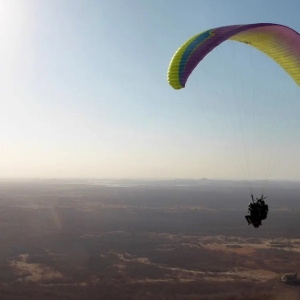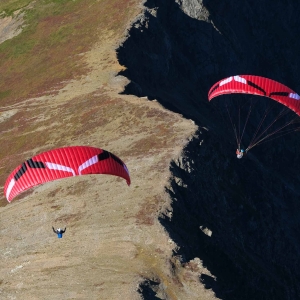Ozone Moxie
$3,840.00
Rapid Progression
The Moxie is an all-new design engineered from the ground up to support the beginning phase of your paragliding career.
For new pilots and students, the Moxie is ideal for progressing your flying with maximum ease and safety. The wing has been designed with the easiest launch we have ever experienced, highly intuitive handling, a generous yet precise brake range for fun and effective thermalling performance, and a deep and forgiving flare. Our most confidence-inspiring wing yet, the Moxie allows you to build skills in a shorter period of time for a quicker path to advanced flying.
For instructors, the Moxie provides the ultimate platform for student progression. It is suitable for both ab-initio and the newly qualified.
Description
Launch, Landing, & Flight
Launches and landings are particularly easy. Excellent roll stability, a pitch-stable profile, and rapid inflation characteristics mean that the Moxie launches easily even with no riser input — simply walk forward. Due to a generous and responsive brake range, landings are highly forgiving even in instances of late-stage asymmetric brake input. The wing is highly stable in pitch and roll, which provides all phases of flight from launch to flare with a high degree of passive safety and comfort. The flight segment can only be described as reassuring, with enough responsiveness in the brake range to make the wing enjoyable to fly while providing peace of mind.
This is a highly dependable tool for instructors and can form the backbone of any school’s fleet whilst also meeting the demands of the newly qualified pilot. No other wing is so easy and also so capable.
Full of Tech
The Moxie contains an amount of technological features that may surprise you given the class and the cost of the wing.
- Winglets: Following the success of use in our paramotor range, we have adapted winglets to the Moxie. It is hard to overstate the benefits of this simple add. They are a win-win feature, yielding significant improvement to spiral and roll stability at no cost in performance — increasing both safety and handling, with no downsides.
- Carefully engineered cell openings have eliminated any form of vibration or flutter that are frequently an issue in entry level wings.
- Double transversal shaping tech from our competition wing series provides a perfectly wrinkle free leading edge, maximizing the glide performance available in this aspect ratio and profile.
- An optimised line plan has reduced line drag by 18% compared to previous designs in this class of wing.
- The Moxie-specific profile has been selected for the easiest possible inflation & ground handling characteristics, and passive safety, while maintaining excellent performance for the class. This all new profile has significantly reduced thickness which reduces the volume of air, which in turn makes inflation and launch much
Additional information
| Weight | 12 lbs |
|---|
Related products
-

Ozone Swift Max
$6,100.00 This product has multiple variants. The options may be chosen on the product page -

Ozone Rapido 3
$2,800.00 This product has multiple variants. The options may be chosen on the product page -

Ozone Litespeed 3
$3,800.00 -

Ozone Geo 7
$5,100.00 This product has multiple variants. The options may be chosen on the product page









